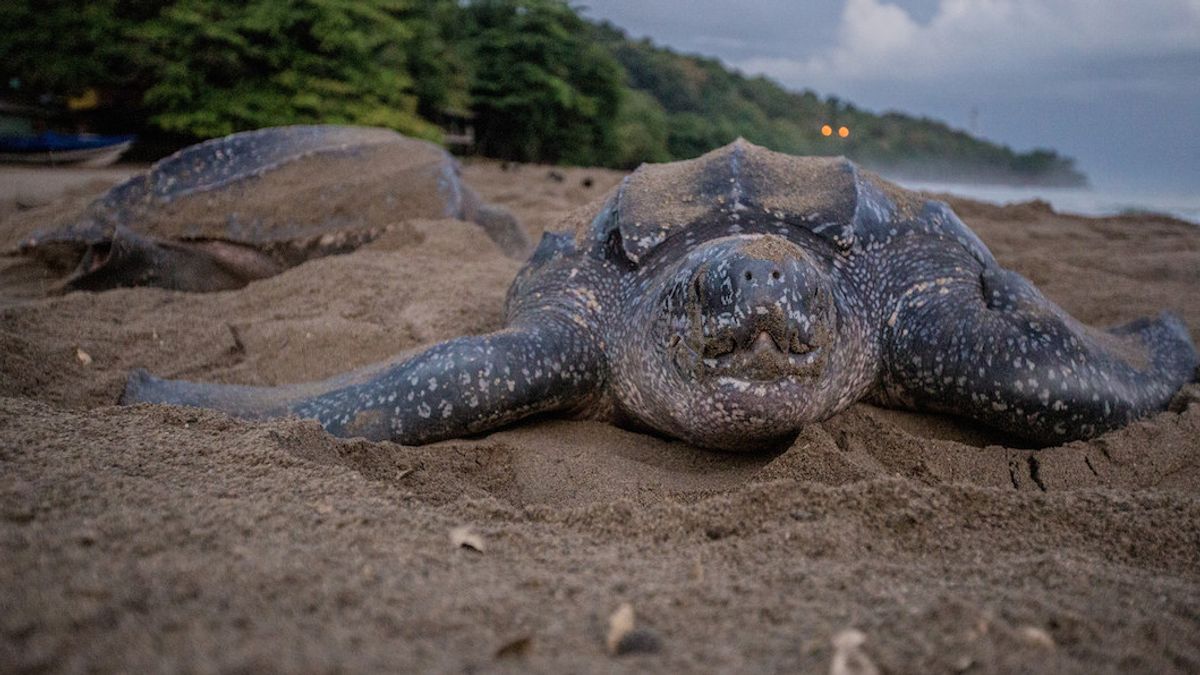JAKARTA - Researchers on Thursday described the remains of a turtle found in northeastern Spain named konochelys aenigmatica which is about 12 feet (3.7 meters) long, weighing slightly below two tons and living during the Cretaceous Period, the last round of the dinosaur era. This is the largest turtle in Europe.
The turtle sailed the subtropical sea that swept through the island coast which formed Europe 83 million years ago. The size is about like a Mini Cooper car.
That size dwarfs the largest turtle today, the gubernatorial turtle, which is 7 feet (2 meters) long and is known for its marathon sea migration.
"Leviathanochelys along Mini Cooper while Archelon measures the same size as Toyota Corolla," said paleontologist and study co-author Albert Sel
Scientists excavated remnants of lifelessness near the village of Col. de Narg? Alt Urgell Catalonia, after a prominent fossil from the ground was discovered by a pedestrian in the South Pyrenees mountains.
To date, they have found parts of the kakapas posterior, or shells and most of the pelvic corsets, but no skulls, tails, or limbs.
Fossil shows that it has a fine kakapas similar to a seaguide, with its own shell 7.7 feet (2.35 meters) long and 7.2 feet (2.2 meters wide).
The presence of a pair of bone bulges on the front side of the pelvic differs from that of other known sea turtles, suggesting that
This shows that sea turtle gigantisme is developing independently in a separate Cretaceous lineage in North America and Europe.
iscochelys aenigmatica means a puzzle "Leviathan tortoise", due to its large size and strange pelvic shape that researchers suspect is associated with its respiratory system.
"Some pelagic animals (which live in the open ocean) show modifications to their respiratory system, to maximize their respiratory capacity at a very deep depth," said Selos.
Its size, which is more or less like a car, is considered good, considering the dangerous traffic in the ancient Sea of Tethys where badminton is swimming, where there are many large predators. Large marine reptiles with strong jaws called mossaurus are the largest predators, some of which exceed 50 feet (15 meters) in length. Various sharks and paries as well as long-necked marine reptiles called plesiosaurs are also lurking.
"Slighting animals the size of good luck is probably only possible by large predators in the context of the sea. At that time, large marine predators in the European zone were mostly sharks and prayer rooms", explained Oscar Castillo, a student of the master's degree program in Paleontology at Universtat Aut seenoma de Barcelona and lead author of the study published in the journal Scientific Reports.
"During the Cretaceous Age, there was a tendency for sea turtles to increase their body size.
Other big turtles from Earth's past include Protostega and Stupendemys, both reaching a length of about 13 feet (4 meters). The prototype is a Cretaceous marine tortoise that lived about 85 million years ago and, like its cousin then Archelon, inhabited a large inland sea that at that time split North America into two.
Meanwhile, Stupendemys roamed lakes and rivers in northern America about 7-13 million years ago during the Miocen Age.
The English, Chinese, Japanese, Arabic, and French versions are automatically generated by the AI. So there may still be inaccuracies in translating, please always see Indonesian as our main language. (system supported by DigitalSiber.id)













